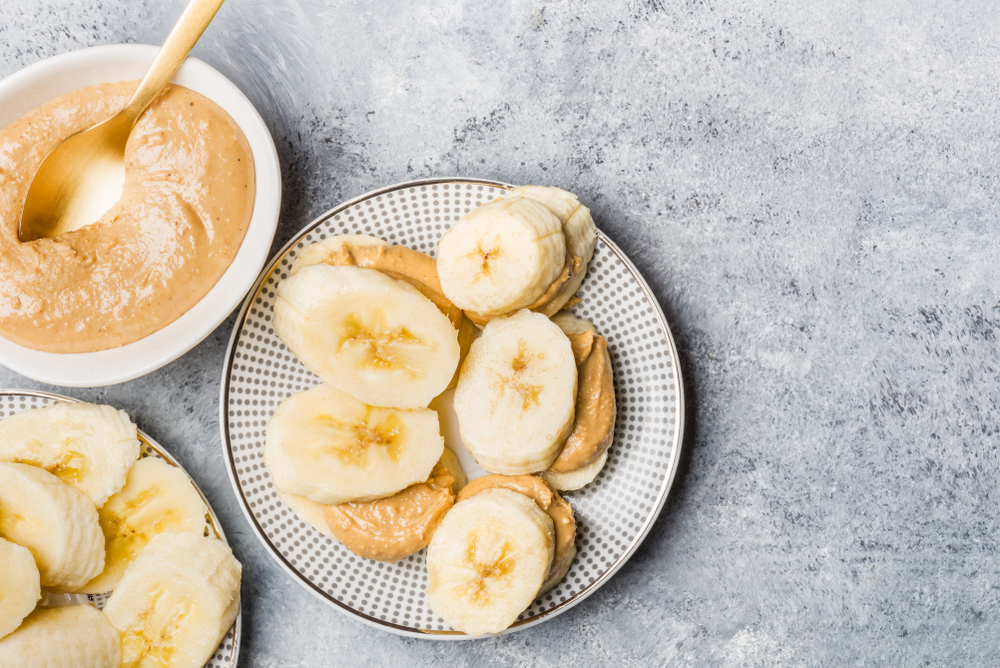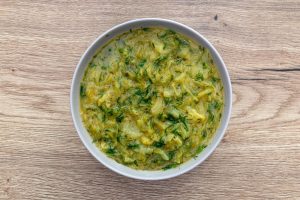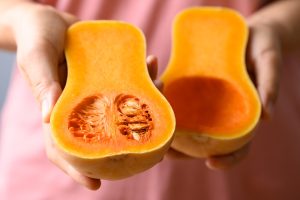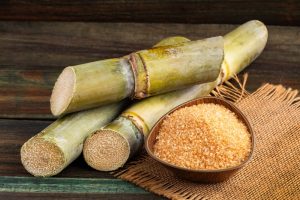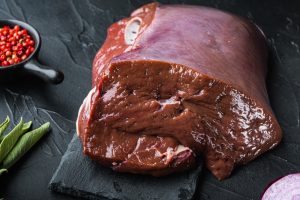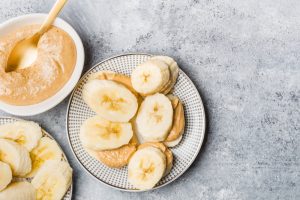Yes, banana and peanut butter can help you lose weight when you stick to controlled portions—a medium banana with two tablespoons of peanut butter gives you about 290-300 calories and keeps you full for 8-12 hours by stabilizing blood sugar and triggering satiety hormones.
However, this combination only works if you avoid common mistakes like eating straight from the jar or choosing peanut butter with added sugar, which can quietly sabotage your progress and lead to weight gain instead.
Keep reading to learn exactly how to use this pairing strategically, what the research actually shows, and the four critical errors that could ruin your results.
The Truth About Banana and Peanut Butter for Weight Loss
When you pair a medium banana with two tablespoons of peanut butter, you're looking at roughly 290-300 calories that can actually support your weight loss goals.
The key word here is “controlled portions”—this isn't a free pass to eat unlimited amounts, but rather a strategic snack that works with your body's hunger signals instead of against them.
Here's why eating a banana by itself might actually work against you: without any fat or protein to slow digestion, that banana sends your blood sugar on a rollercoaster ride.
You get a quick energy spike followed by a crash that leaves you hungry and reaching for more food within an hour or two.
Peanut butter changes this equation completely.
The fat and protein create a balanced snack that prevents those blood sugar spikes and keeps you satisfied for hours.
The complete nutritional picture looks like this when you add whole-wheat bread:
- 402 total calories
- 17 grams of protein
- 7 grams of fiber
- 611 milligrams of potassium (great for muscle function and blood pressure)
- 89 milligrams of magnesium
- 933 milligrams of arginine
- About one-third of your daily vitamin B6 needs
- 31% of your daily niacin
Even without the bread, you're getting nearly 5 grams of fiber from the combination alone.
That fiber content matters because research consistently links higher fiber intake to lower body mass index.
The fundamental weight loss principle at work here is simple: you need to create satiety while maintaining a calorie deficit.
This combination delivers on both fronts.
The protein helps preserve your muscle mass as you lose weight (you want to lose fat, not muscle), while the fiber and healthy fats trigger fullness signals that last.
You're not just cutting calories and suffering through hunger—you're actually giving your body nutrients that tell it to stop being hungry.
That's what makes this approach sustainable instead of just another restrictive diet trick.
How This Combination Triggers Weight Loss in Your Body
Your body responds to peanut butter in a specific physiological way that makes weight loss easier.
When you eat peanut butter or peanuts with breakfast, your gut starts secreting more peptide YY—a hormone that directly promotes feelings of fullness.
This isn't just about feeling satisfied in the moment.
Research shows that people who include peanut butter with their morning meal report a decreased desire to eat for 8-12 hours afterward. That's most of your waking day where you're naturally less interested in snacking.
A study tracking 15 obese women found that adding approximately three tablespoons of peanut butter to breakfast produced significantly more fullness compared to a control group.
The women also reported less desire to eat throughout the day.
You might notice this yourself—after eating this combination, the constant mental chatter about your next meal tends to quiet down.
Blood sugar stability plays a major role here.
Despite peanut butter's natural sweetness, it has a low glycemic index.
When researchers added two tablespoons of peanut butter to high-glycemic meals (the kind that normally spike blood sugar), they found it reduced the post-meal blood sugar spike.
This matters because those spikes and subsequent crashes are what drive cravings and emergency trips to the vending machine.
The 8 grams of protein in each two-tablespoon serving does more than just contribute to fullness—it helps preserve your muscle mass while you're losing weight.
Losing muscle along with fat slows your metabolism and leaves you weaker, which is why protein intake becomes even more important during a calorie deficit.
The fiber content gives you roughly 10% of your daily needs, and when combined with the banana, you're getting nearly 5 grams total.
Studies consistently show that people with higher fiber intake tend to have lower body mass indexes.
What happens metabolically is particularly interesting.
After eating peanuts, people show an increase in resting energy expenditure—meaning they burn more calories even without increasing physical activity.
Nuts also enhance fat oxidation (your body's ability to burn fat for fuel) and show something researchers call “inefficiency in energy absorption.
Essentially, your body doesn't absorb all the calories from nuts as efficiently as it does from other foods, which means the calorie count on the label slightly overstates what you actually absorb.
All of these mechanisms work together to create what researchers call “high satiety value leading to compensatory dietary responses.”
In plain terms: you feel fuller, so you naturally eat less at your next meal without having to white-knuckle your way through hunger.
Your body compensates for the calories from the peanut butter and banana automatically, which is why people who regularly eat nuts don't gain weight from them despite their calorie density.
The Calorie Trap: Why This Healthy Snack Can Backfire
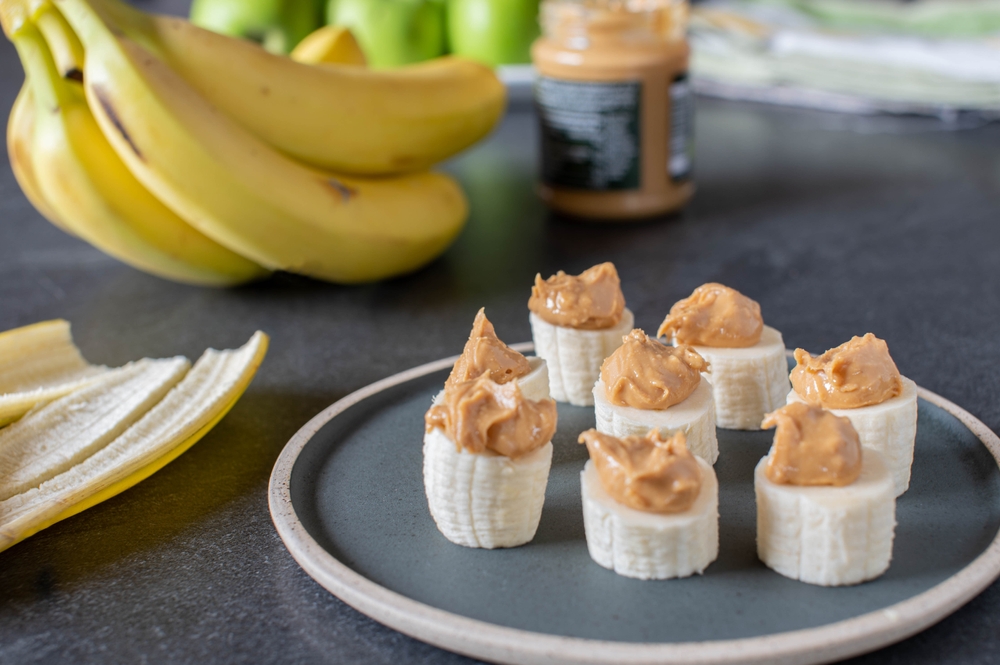
Peanut butter packs close to 200 calories into just two tablespoons. More than 75% of those calories come from fat.
This creates what you might call a double-edged sword situation—the high fiber and fat content keep you full longer and help you eat less throughout the day, but if you misjudge your portions, you can easily tip from calorie deficit into calorie surplus and start gaining weight instead.
The portion control challenge is deceptively simple: two tablespoons doesn't look like much.
Depending on your spoon size, that could be one heaping spoonful.
Most people eyeball it and end up eating more than they think.
The real danger zone is eating straight from the jar.
Dip your spoon in three times while making a snack, and you've just consumed a meal's worth of calories—potentially 600 calories or more—without registering it as a substantial amount of food.
Product selection creates another layer of problems.
Peanut butter with added salt isn't ideal for weight loss because excess sodium makes your body hold onto water.
This shows up as bloating and temporary weight gain on the scale, which can be discouraging even if you're doing everything else right.
The water weight is real weight that you're carrying around, even if it's not fat.
Here's where things get counterintuitive: reduced-fat peanut butter sounds like the smarter choice for weight loss, but manufacturers typically replace the eliminated fat with added sugar.
You end up with a product that's worse for blood sugar control and doesn't keep you as full, defeating the entire purpose of choosing this combination in the first place.
Measuring becomes non-negotiable if you want this to work.
Get an actual measuring spoon set and use it every single time.
The difference between two measured tablespoons and what you think two tablespoons looks like can easily be 100+ calories.
Over a week, those unmeasured portions can wipe out the calorie deficit you've worked to create through exercise or eating less at other meals.
This isn't about being obsessive—it's about being accurate enough to get the results you want.
Exact Portions and Timing for Maximum Fat Loss
Your precise target: two tablespoons of peanut butter (190 calories) plus one medium banana (100 calories).
That's 290 calories total, and two tablespoons represents your maximum daily intake of peanut butter if weight loss is your goal.
Timing matters more than you might expect.
The best results come from eating this combination in the morning as part of breakfast.
When you start your day with it, you feel full longer and prevent the unnecessary snacking that derails most people by mid-morning.
A 2014 study published in the American Journal of Clinical Nutrition found that the highly satiating benefits of peanut butter work best when consumed as a daytime snack.
So you have two solid research-backed windows: either with breakfast or as a planned snack sometime during your day.
Here's how to work this into your morning routine without turning it into a production:
- Spread on whole-grain toast with banana slices – This gives you the complete 402-calorie breakfast with 17 grams of protein and 7 grams of fiber mentioned earlier
- Blend into oatmeal with banana chunks – The warmth brings out the flavors and creates a filling breakfast bowl
- Mix into smoothies with Greek yogurt and unsweetened almond milk – This works well if you prefer drinking your breakfast or need something portable
For snack preparation, keep it simple. Slice your banana and measure out your peanut butter ahead of time.
If you want something that feels more dessert-like, try freezing your banana and then microwaving it with peanut butter for 30 seconds—the heat enhances the natural sweetness without adding any sugar.
Integrating this into your meal planning requires thinking about your total daily calorie target.
If you're aiming for 1,500 calories per day, this 290-calorie snack represents about 20% of your budget.
That means you need to plan your other meals accordingly.
Don't just add this on top of everything you're already eating.
Replace a less nutritious snack or reduce portion sizes at lunch and dinner slightly to make room for it.
The satiety you get from this combination should make those adjustments feel natural rather than restrictive.
Four Critical Mistakes That Will Ruin Your Results
Most people sabotage their weight loss efforts before they even take their first bite.
These mistakes are subtle enough that you might not realize you're making them, but they're powerful enough to completely negate the benefits of this otherwise effective combination.
1. Choosing peanut butter with added salt
Extra sodium forces your body to retain water.
This shows up as bloating and weight gain on the scale, even when you're eating the right portions.
The frustrating part is that this water weight feels real—your clothes fit tighter, and the scale climbs despite your efforts.
While some peanut butter naturally contains a small amount of salt, products with added salt tip you into the range where water retention becomes a problem.
2. Selecting reduced-fat peanut butter
This seems logical—fewer calories from fat should help you lose weight faster, right?
The problem is that manufacturers replace the eliminated fat with added sugar to maintain flavor and texture.
You end up with a product that spikes your blood sugar, doesn't keep you as full, and undermines the entire metabolic advantage of this combination.
The fat in regular peanut butter is actually what makes it work for weight loss.
3. Not measuring portions carefully
You can consume a meal's worth of calories without realizing it.
When you eyeball portions or eat straight from the jar, two tablespoons quickly becomes four or five.
That seemingly innocent habit of dipping your spoon into the jar three times while making your snack?
You've just eaten 600+ calories.
Get actual measuring spoons and use them every single time—the difference between measured and estimated portions can easily be 100-150 calories, which over a week wipes out the deficit you've created elsewhere.
4. Avoiding natural peanut butter options
Natural peanut butter with peanuts as the only ingredient gives you the cleanest nutritional profile.
If the product contains added oil, choose one with healthier oils rather than hydrogenated oils, which contribute trans fats.
When reading labels, look for all-natural peanut butter that contains only peanuts and salt—nothing else.
Avoiding these options means missing out on the metabolic benefits that make this combination effective.
The jar-eating habit deserves special attention because it sabotages portion control in a way that feels almost harmless in the moment.
Standing at the counter with a jar and spoon, eating while you prep other food or clean up—these scenarios make it impossible to track what you're consuming.
Always portion your peanut butter into a small bowl or directly onto your banana before you start eating.
Poor pairing choices also add up quickly.
If you always combine your peanut butter with jelly or chocolate, you're adding unnecessary sugar that triggers cravings and blood sugar spikes.
You don't need to completely eliminate these pairings—an occasional peanut butter and jelly sandwich won't destroy your progress.
But when “occasional” becomes “most of the time,” you're no longer getting the weight loss benefits.
Save those indulgent combinations for once or twice a week at most, and make the banana and peanut butter your standard approach on other days.
Long-Term Success: Making This Work Sustainably
The research on long-term outcomes tells a compelling story.
People who regularly consume peanuts and peanut butter tend to have lower BMIs than those who don't.
A study tracking participants over five years found that eating peanut butter and nuts was associated with a 5% lower risk of weight gain during that period.
These aren't short-term results that disappear once you stop—regular consumption creates lasting benefits.
Making this work sustainably comes down to a few non-negotiables: measure portions strictly using measuring spoons, choose natural peanut butter without added sugar or hydrogenated oils, and consume this combination primarily in the morning or as a planned snack.
Track your total daily calories to make sure you're maintaining a deficit. This isn't about perfectionism—it's about knowing your numbers well enough to get results.
The replacement strategy matters more than most people realize.
This combination should substitute less nutritious snacks rather than get added on top of your existing diet.
If you normally grab chips or cookies in the afternoon, swap that for banana and peanut butter.
If you typically eat a muffin with your morning coffee, replace it with this combination on whole-grain toast instead.
Pairing with whole grains gives you sustained energy throughout the day and prevents the afternoon energy crash that sends people hunting for more food.
Consistency doesn't require rigidity.
You can maintain this approach without feeling restricted if you think about it as upgrading your snacks rather than limiting yourself.
Some days you'll want the banana and peanut butter; other days you might prefer something else.
The goal is making it your default choice often enough that you get the metabolic and satiety benefits over time.
Reassess your portions as you progress.
When you first start losing weight, 290 calories for this snack might fit perfectly into your daily target.
As you lose weight, your total calorie needs decrease slightly, which means you might need to adjust to stay in a deficit.
If weight loss stalls for more than two weeks, look at whether your portions have crept up or whether this snack still fits your new calorie requirements.
Sometimes dropping to one and a half tablespoons of peanut butter is enough to restart progress.
Integration into a balanced diet approach is what separates temporary weight loss from permanent change.
This combination isn't magic—it's one tool among many.
You still need vegetables, lean proteins, adequate hydration, and reasonable portions at meals.
What makes it valuable is how well it fits into a normal eating pattern.
You're not following a restrictive plan that you'll eventually abandon; you're incorporating a satiating, nutrient-dense snack that helps you eat less without thinking about it constantly.
That's the difference between losing weight for a few months and keeping it off for years.
Conclusion
Banana and peanut butter can genuinely support your weight loss when you measure portions carefully, choose natural products, and use this combination to replace less nutritious snacks rather than adding calories to your day.
The 8-12 hour satiety window and metabolic benefits make this one of the more sustainable approaches you'll find—no restriction, just strategic eating that works with your hunger signals.
Get your measuring spoons, buy natural peanut butter with minimal ingredients, and start treating this as your go-to snack when you need something that actually keeps you full.

